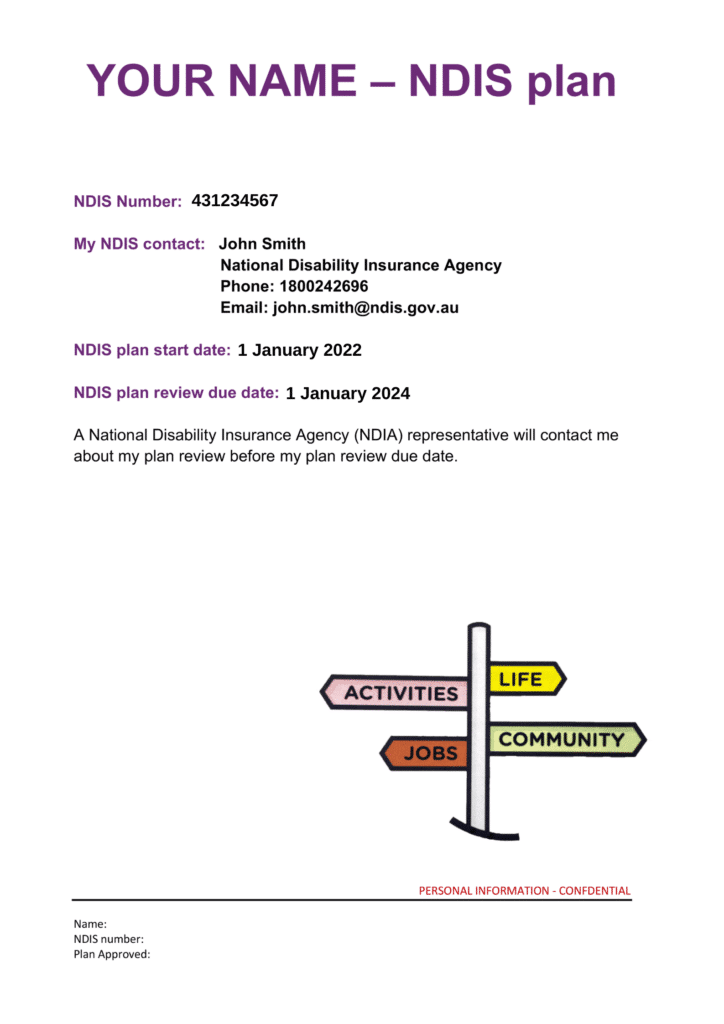ndis toolkit
Using your NDIS funding
Our top tips and resources to help guide you on how to get the most from your plan
How do I read my NDIS plan?
Are you looking at your NDIS plan feeling confused or thinking ‘what does this all mean?’. Whilst it can be confusing looking through your NDIS plan, we are here to make life easier!
Your NDIS plan is made of three seperate sections:
My profile
The front page and your profile contact basic details about you and your plan including:
– Your Plan NDIS Number
– Your NDIS contact info
– Plan Start & End Date
– My Profile
– Date of Birth
– Contact details
– Information about you
– Current informal and formal supports
My goals
These were discussed and decided in your NDIS planning meeting and helped to determine what supports and level of funding you have been given:
– Short term goals
– Medium term goals
– Long term goals
My Funded Supports
Your funded supports outline how much funding you have and what budget categories have been approved (in other words – what kinds of supports you can access). This section is a table and includes:
– Overall Budget
– Budget PER category
– Types of supports under each category
– How your plan is managed
How do you read your funded supports?
Each support category will display the same information including:
– Budget Category Name
– Budget amount = total amount funded for that specific category
– Supports funded = what supports are included and can be funded from this category
– Budget management = how the funding in that specific category is managed


I have my NDIS plan, now what?
If you have just received your NDIS plan and have NO IDEA what to do next, you are NOT alone!
Here are our top tips to getting started:
- Go through your plan with your LAC to understand what funding you have
- Find an NDIS plan manager (if your plan is plan managed)
- Find a Support Coordinator (if you have funding under ‘Support Coordination’)
- Budget for how much you can spend
- Find appropriate supports
Understanding my NDIS funding
Your NDIS funding may consist of all or some of the three different support purposes. Within each of these ‘support purposes’ are different budget categories which will fund different types of support
We unpack these 3 main support purposes below:
What are Core Supports?
This might include daily support at home, or in the community and funding can be used flexibly in this category.
CLICK HERE to find out how you can use your CORE supports funding
What are Capital Supports?
This is the least flexible budget as the funding must be used as identified in the plan.
CLICK HERE to find out what categories fall under capital supports
What are Capacity Building Supports?
The amount of funding in each support category is flexible ONLY WITHIN that category. You cannot combine funding across support categories, as each category is working towards achieving a particular goal.
CLICK HERE to find out what categories fall under capacity building supports


How do I find appropriate supports?
Navigating long wait lists, and a long list of recommendations can be overwhelming and exhausting and sometimes it can be a bit of trial and error to find the right support that works for you or your child.
Here are our top tips of where to find trust supports near you:
- Chat to family & friends
- MyCareSpace
- The A List Hub (Autism-friendly social options)
- NDIS Provider Finder
Do I need a Service Agreement?
The NDIS does not require that you sign a service agreement with your providers, however it can be very helpful to have an agreement in place, especially if you are paying someone for supports.
What does an NDIS Service Agreement look like?
What should a Service Agreement include?
Service agreement should include:
– the type of supports that will be provided
– the total cost and rate of the support
– payment terms
– consent for the creation of service bookings
– how, when and where the supports will be delivered
– how long the supports are required for
– how the participant and provider will deal with any problems, complaints or questions that may arise
– The participant’s responsibilities
– The provider’s responsibilities
– Notice required to change or end the service agreement
For more information on this CLICK HERE
What are the benefits of having a Service Agreement?
1) Clearly outlines supports delivery & expectations
2) Measure outcomes
3) Assist with budgeting
4) Confirm pricing and what you will pay
5) Protect your privacy & rights
5) Confirm cancellation & changes policy


I’m not happy with my plan, what can I do?
If you are unhappy with the funds allocated in your plan, and your feel as though your disability needs were not fairly reflected in your plan, then you can consider putting in an appeal or requesting a plan review.
First step is to contact the NDIS and discuss your options. Call 1800 800 110 or contact your LAC
Consider what type of plan review is suitable for you. Here are the types of reviews you may request:
- Full Plan Reassessment
- Plan variation
- Internal Review of a decision or appeal
Don’t have a plan yet?
NDIS application toolkit
The process of applying for funding with the NDIS can feel quite daunting, so we’ve tried to simplify it for you with our three simply steps
- Who is eligible to apply?
- Who can help me apply?
- How to apply?
Plan Reassessment or Review
Preparing for your upcoming plan reassessment or understand how to put in an internal plan review
- What is a plan reassessment?
- What happens during the meeting?
- How do I prepare?
- What if I don’t need a plan re-assessment?
- How do I request a plan reassessment?
HAVE ANY QUESTIONS?

